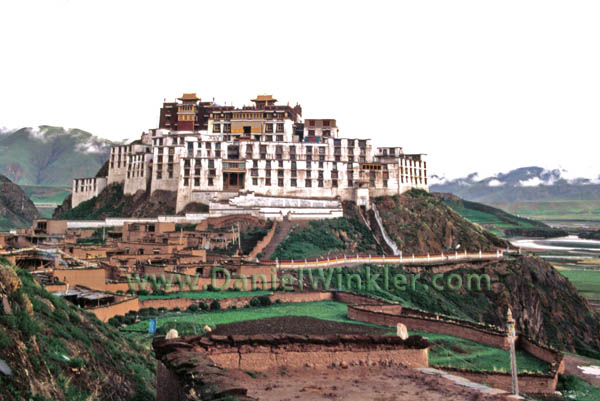|
|
Sok Tsanden Monastery in Sok County, Southeast Nagchu, Prefecture one of the nicest located monasteries in Tibet. In the past access was often forbidden. If you wnat to visit this monastery you need to have it mentioned in your travel permit.
Sok County / Suo Xian, Nagchu / Naqu Prefecture, Tibet AR.Photo: D.Winkler, June 2005.
|
 |
One might think this is a scene from Central America due to chilli and maize, but this is a farm house in Gyarong, in far eastern Tibet. The freshly harvested corn has been stashed on the roof for drying and chillies are hung for drying too. Corn was first recorded in Yunnan in 1574, where it arrived from India (Clarke 1990). In Eastern Tibet lots of corn is baked into tasty breads.
Note the old bicycle wheel being used as antenna. © Daniel Winkler, Oct. 28, 1999
Barkam County / Ma'erkang Xian, Aba TQAP, Sichuan.
Clarke, G.E. (1990): The Movement of Population to West China: Tibet & Qinghai. In: J.M.Brown&R.Foot (eds.): Migration - The Asian Experience, New York, 221-257
|
 |
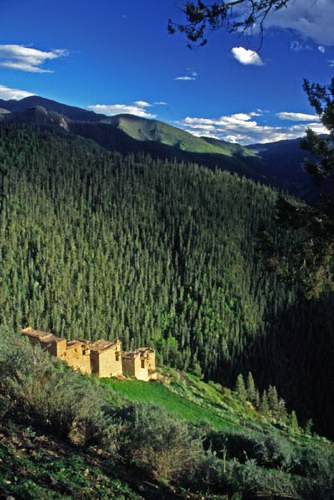 |
|
Lungta prayer-flags and a Mani pile covered with Yak skulls mark a pass near Trakaniri 15 km to the South of Lithang. Tibetans gather skulls in sacred sites to help the spirit of the deceased animals to a better rebirth. February 1999, 4170m, Lithang County/Litang Xian, Ganzi TAP © Daniel Winkler
|
Village near Kyangba Gompa high above the valley ground. Note how the sunny south-facing slope has been developed and is used for agriculture and living, while the shady north-facing slope is still covered by a primary fir-spruce forest.© Daniel Winkler Litang, June 1999, 3850m
|
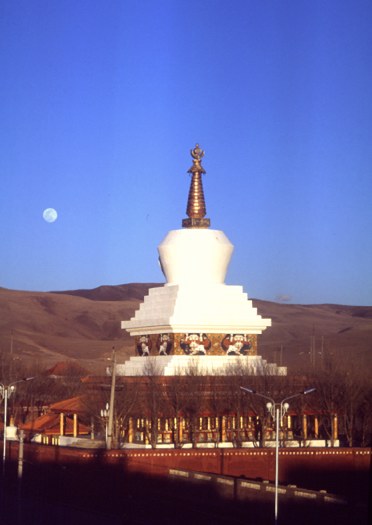 |
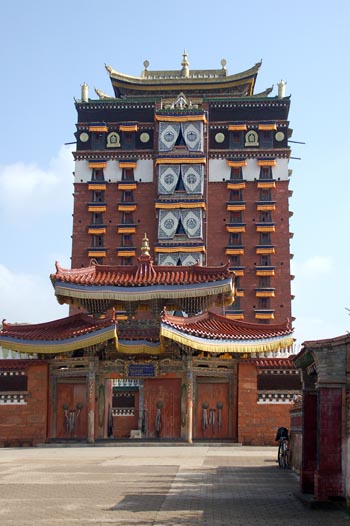 |
|
A newly erected Stupa in Litang Town. Once again stupas are being build all over the Tibetan areas. One can drive for ours on dirt tracks and suddenly glimpse a new huge Stupa in the middle of nowhere © Daniel Winkler, Nov.12, 2001
|
A replica of the Milarepa tower in Tso (Chinese: Hezuo, 2895m), the prefectural capital of Ganlha / Ganlan Tibetan Autonomous Prefecture, Gansu Province.
© Daniel Winkler, July 15, 2006
|
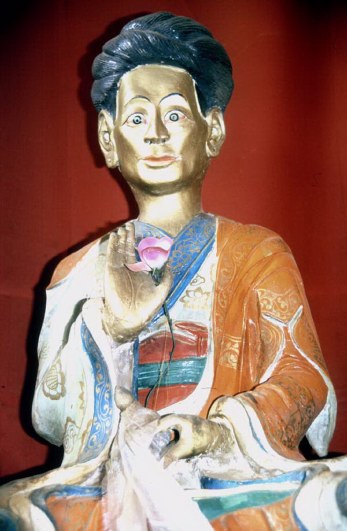 Statue of Terton Sogyal photographed in the Paldi Triked Shedra (Tantric College) above Karzang Gompa. Terton Sogyal was a Nyarongpa.
© Daniel Winkler, Nov. 9, 2001
|
A painting of Nyala Pema Duddul (1816-1872) I photographed in in the Paldi Triked Shedra above Karzang Gompa. Nyala Pema Dundul is famous for having realized "Rainbow body", the dissolution of the physical body into light at the point of death. This rare realization was last documented in Nyarong again from Khenpo Achö (1918–1998) © Daniel Winkler, Nov. 9, 2001
|
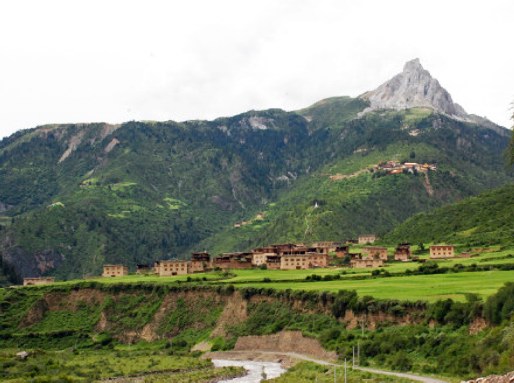 |
The sacred Mt. Drokar, also known as Lhanglhang Norbu Yangtse, near Shunlong. On Mount Drokar you can see Karzang Gompa, the monastery of Nyala Pema Duddul, who accomplished rainbow body. Above the Gompa is Paldi Triked Shedra (Tantric College) located.
Besides being a very important place for the Nyingma tradition, this mountain is a successful wildlife sanctuary and good place to see blue sheep and pheasants.
© Daniel Winkler, July 2009.
Shunlong Township / Xionglongxi Xiang, Nyarong County / Xinlong Xian, Ganzi TAP, Sichuan.
|
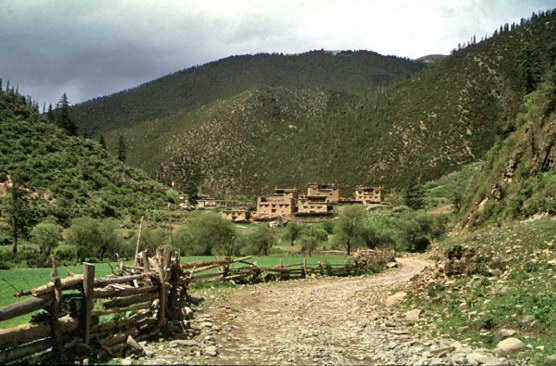 |
Village in Chunba Valley (SinoTibetan: Kyangba, Pinyin: Junba). The south-facing slopes in the back have lost all their spruce trees due to selective cutting by locals or fire. However, the oak forest are rich in matsutake mushrooms. North slopes had dense forest up until the early 1990s when logging was intensified. May 2000, 3600m © Daniel Winkler
|
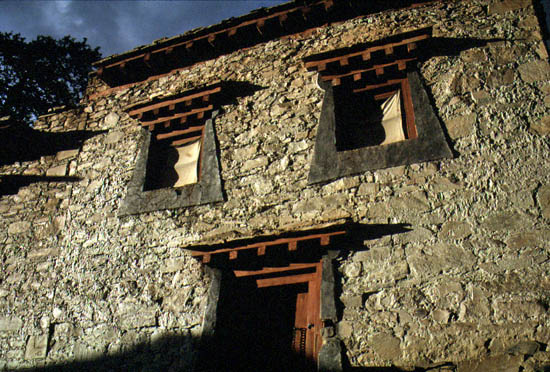 |
Chunba Gompa high above the valley ground. Half of the Gompa has been rebuild in recent years.
Lithang /Litang County, June 1999, 3850m
© Daniel Winkler
|
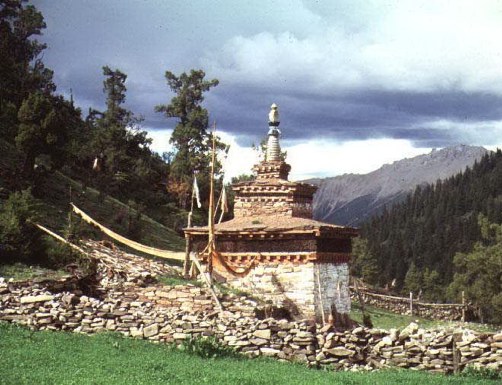 |
Chorten in Yiri, Riwoche, Chamdo Prefecture, Tibet AR. In the back spruce forest (Picea balfouriana) and some junipers (Juniperus tibetica?).© Daniel Winkler, Riwoche (SinoTibetan: Riwoqe, Pinyin: Leiwuqi), Chamdo (SinoTibetan: Qamdo, Pinyin: Changdu) Prefecture,July 1997, 4200m
|
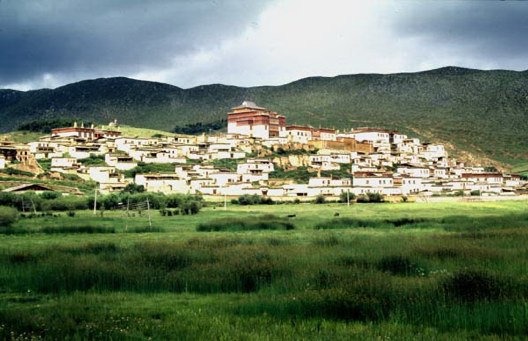 |
Gyalthang Gompa, a Gelukpa monastery on its way to a major tourist attraction. In front wetlands which used to be a lake, but were drained while Mao was leaping China forward.
Currently the County is looking into reflooding the area and having rowing boats available for the tourists. The county was formerly known in Chinese as Zhongdian, but has been renamed to Xianggerila - Shangrila or is it Shangri Lala-land?, Dechen / Deqen / Deqing TAP, NW-Yunnan. © Daniel Winkler, July 27, 2001
|
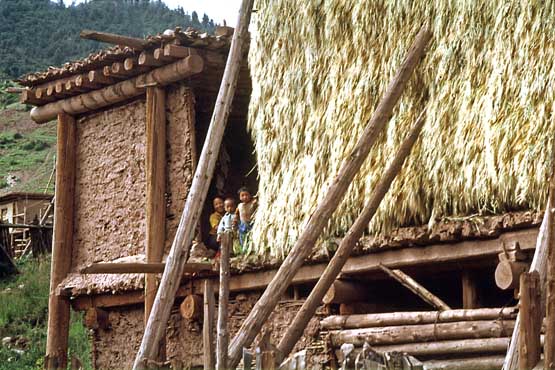 |
Plenty of hay for feeding needy animals through the harsh winter in this Kham village. However the hay will not suffice for all the livestock. It is intended for calves and sick animals. Traditionally Tibetans do not provide hay for most of their livestock. Animals are kept on pastures to fend for themselves in the dry winter.© Daniel Winkler, South of Sertar County, Aba / Ngawa TAP, Sichuan, August 1998
|
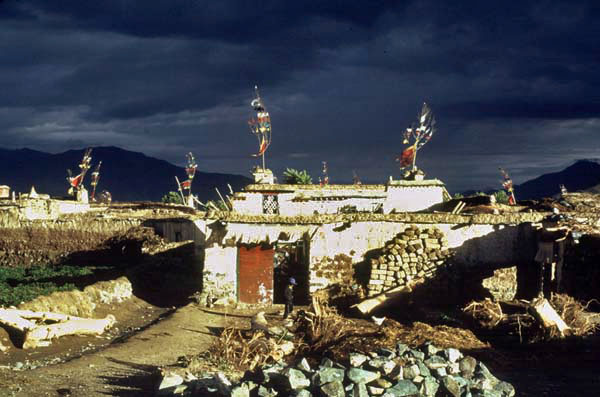 |
A farmhouse in Maldrogongkar County, NE of Lhasa. A thunderstorm was approaching, when the sun managed to break through the clouds for a last time before the rain started.
© Daniel Winkler,Maldrogongkar County (also Medrogongar, Pinyin:Mozhugongka), Lhasa Municipality, Tibet AR, June 20, 1997
|
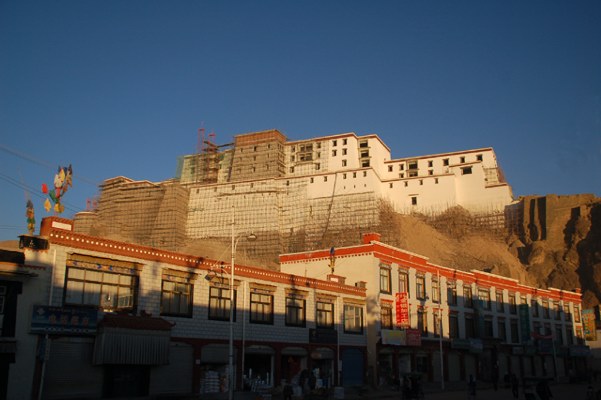 |
The newly rebuild Dzong (=castle) in Shigatse. Shanghai Province provided the funding for this project. I was told that the design was based on old photos. However, the Shanghai team could not locate any historic photos depicting the back side, thus the engineers had to improvise.
© Daniel Winkler Shigatse (Pinyin: Rikaze, Tibetan Pinyin: Xigaze), 3830m, December 2006.
|
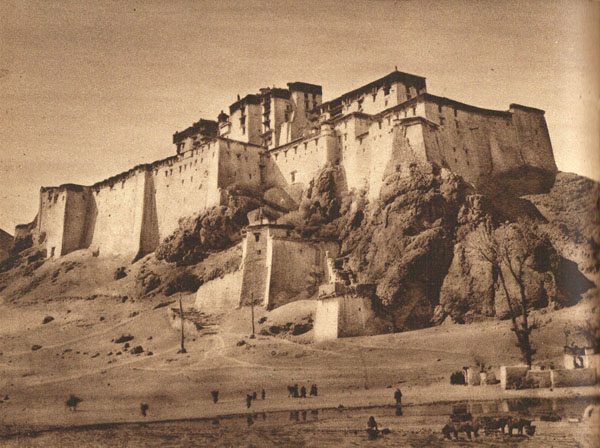 |
A photo of the old Dzong in Shigatse I found in Emil
Trinkler (ca. 1930): Das Land des Dalai-Lama.
The photo was credited to Clichothek G.m.b.H.
There are quite some differences between the current construction and the building in the old photo. It is not clear if this photo is taken from a completely different perspective.
Could it be the backside?
|

